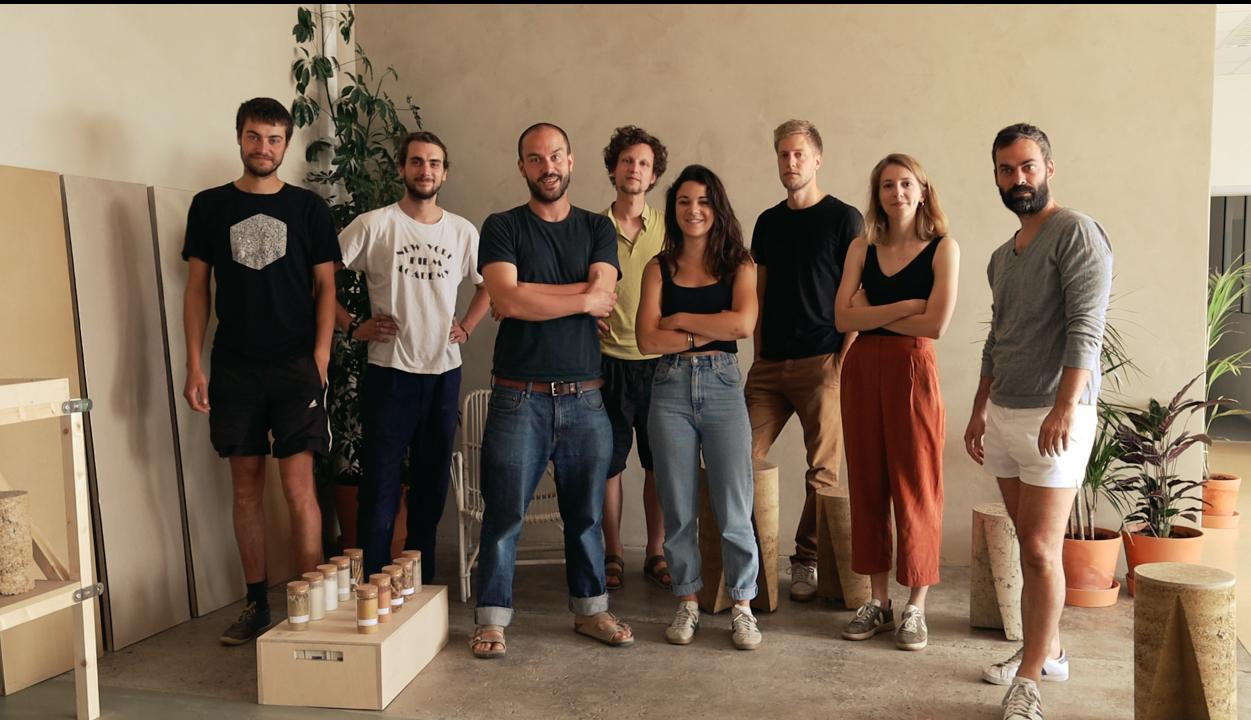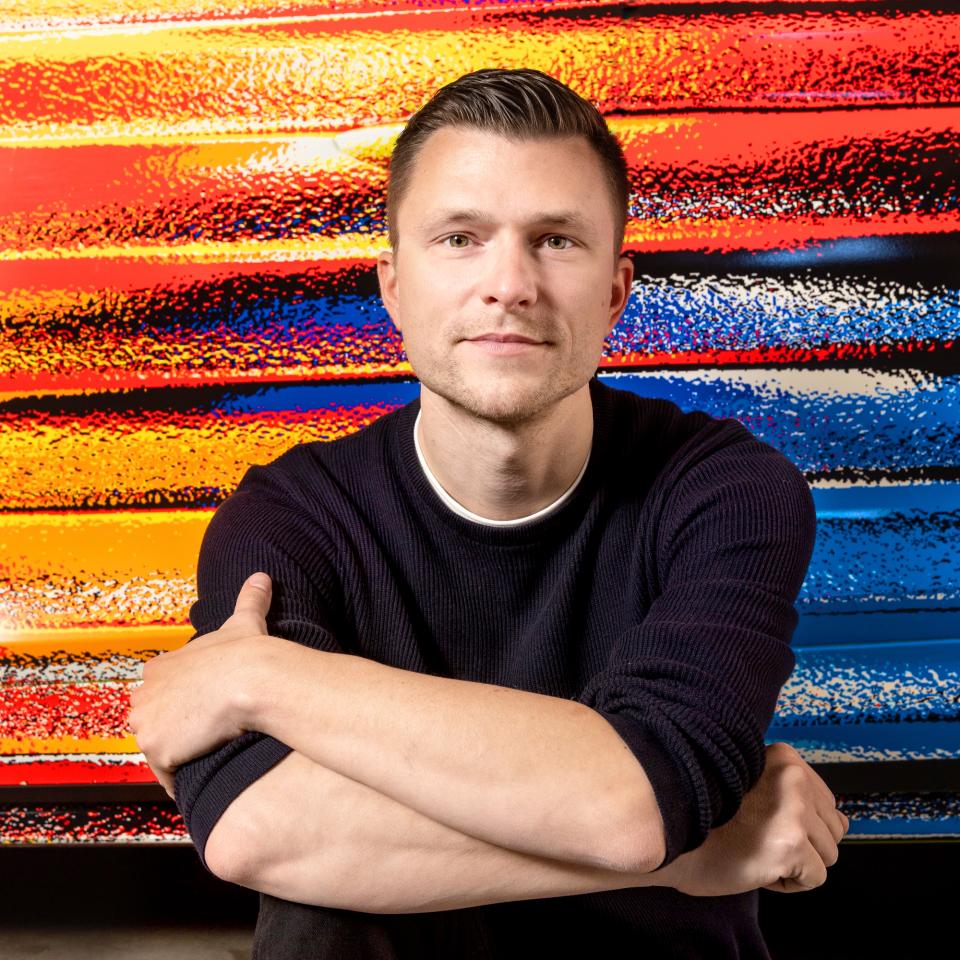The Belgian design scene is vast and diverse. Belgian institutions are always at the forefront of supporting the people, new projects and products that make our country dynamic and unique.
BC Materials - The object becomes.
BC materials was founded by Ken De Cooman, Laurens Bekemans, Nicolas Coeckelberghs & Wes Degreef, in October 2018. The start up transforms excavated earth (officially a ‘waste’) into clay plasters, compressed earth blocks & rammed earth. These are beautiful and perfectly circular building materials that can be produced in a C02-neutral way.
WHAT IS EARTH?
Earth is what sustains us, what stabilizes part of the planet. And for us, it's also a building tool. It’s one of the most beautiful tools we’ve forgotten about over the centuries and that is now, with climate change and the very strong need for a circular economy, a very important tool because it's reversible, healthy and available.
What is a wall?
A wall is something that can stabilize a structure. It’s sometimes used in a negative way, to exclude people, but it’s usually used as an attractive, needed structure within a building to keep people warm inside.
What is a brick?
For most people bricks are baked. A brick is clay formed into a cube, and then burnt. In our practice, we stop just before the burning, because we think this is also a good way of building. It's perfectly possible to work with unburnt materials because they produce way less CO2 and they have extra qualities like acoustics and thermal mass and good humidity regulation. For us, brick is more like a compressed block, an unburnt brick, maybe a bit like what the Romans used and a lot of other cultures before us. For us, it's the building material of the future.
How did you work 10 years ago when you started?
Ten years ago, we were giving policy advice on the circular economy and energy efficiency. Now, ten years later, we feel like there is an elephant in the room, especially in construction and design, and the elephant is the embodied carbon. Nobody has bothered for a long time to look at how we produce materials, how energy-intensive we are when we're producing those materials. Now the question is: after having built houses and designed furniture in an energy-efficient way, can we also reduce the embodied carbon that we used to make a kind of material, to make a kind of building. This is the big challenge for all of those actions.
How do you imagine the evolution of your practice?
I think a possibility for a practice such as ours, is that we move towards a more decentralized way of producing materials, on site, with different kinds of machines that are flexible, interchangeable. We can promote the assets of a specific territory and re-imagine the construction of that territory with the assets that are available on site. There might be prefab elements in it, but it will be based more on the assets of the territory and the good elements that we have there. It’s a lower impact but high-design approach.
Your practice is also based on education and the generous transmission of a working model to the next generations.
We think it's super important to share what we know and what we can teach with current and future generations. There are centuries of tradition and learning and experience before us. We simply lost sight of it during a big part of the 19th century and the 20th century. Now we’re promoting those practices by re-examining ourselves and by passing on the relay baton. We’re very glad that young people, young architects and young designers, are attracted to this new way of building. We all feel that something is changing on this planet and if we want to keep the planet safe and good as it has sustained us so far, it's important that young people take up this challenge in the best possible way. And maybe they’ll invent better ways to work with earth than we do, but we're trying to leverage circular building standards way further than three or four years ago.
Your practice is based on a direct contact with earth…
We organize a lot of workshops for young people so they can touch earth. It's not a theoretical PowerPoint or a video that they can just watch on YouTube. It's really important to feel the earth and it's usually one of the key points: you have to feel for yourself when you can start to mix or to plaster, if it's the right time, the right humidity… Practice is essential in what we do, and it's really reconnecting us with the planet.
There is an important switch of paradigms in building with raw earth. What about the notions of ever-lasting and reversibility?
It's a bit strange that during the Seventies and the Eighties, a lot of buildings were built as strong as possible with a lot of concrete, steel or bricks and that after twenty-thirty years they were already being demolished. Usually, what was left over wasn’t at all, or hardly, reused and just downcycled. For us, the beauty of earth architecture is that you can actually build with it and it already contains a bit of the seed of its demise. We know that earth is not as strong a material as concrete, but that’s also part of the beauty and of the condition of being humans, of being architects: there may be an end to the construction, it might be renovated, transformed, replaced, just moved; or, it might also at some point be demolished or disappear and it's not a crime, it's not a shame. It may provide the future blocks of another building, which is perfectly fine too.
What about ongoing experimentations with bio-sourced materials and possible combinations?
The European Community has made a strong case for a fully circular economy and building and it will require a lot of changes in construction, in architecture, in materials' choices and combinations. One of the most brilliant solutions on the rise is the combination of bio-sourced materials and earth building because they compensate for each other's weaknesses. For example, clay plasters in combination with straw insulation and wood skeletons, or with hempcrete for example and grass insulation. Those bio-sources combined with earth materials form stronger combinations together than other materials, and they will assure a better-quality living environment, and much a much healthier one too.
What is your vision about the future?
I'm pretty optimistic about the future. It's just the speed of it that worries me a bit from time to time. It's not going very fast. I think that there are many pioneering projects in building and design that are really interesting, but the margin of action is becoming very thin. That's also the debate around embodied carbon because the decision you take right now for each kind of building that you build has an impact for centuries. In that sense, you can have a very energy-efficient building, but if it's built with very polluting and CO2 intensive materials, you will still be responsible for those emissions. And that's something that is only now becoming an issue and very quickly, it will have to become a big question mark for a lot of people who design and choose materials.












